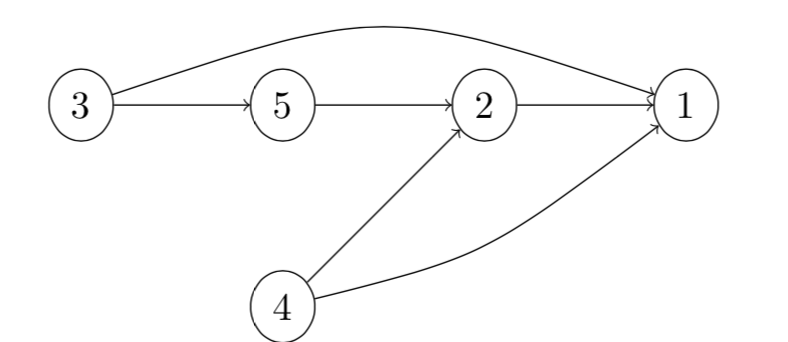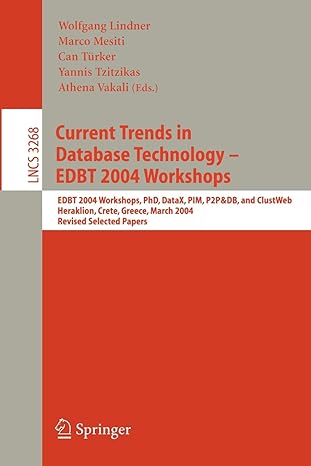Question
Write a program in PYTHON LANGUAGE. The program prompts the user to input a file name. If there is no file with that name in
Write a program in PYTHON LANGUAGE.
The program prompts the user to input a file name. If there is no file with that name in the working directory, then the program outputs an (arbitrary) error message and exits.
The contents of the file consists of lines with text of the form R(m,n) where m and n are integers (that just represent labels), with possibly spaces before and after the opening and closing parentheses, respectively. It represents a partial order relation R (so an asymmetric and transitive binary relation). For instance, the contents of the file partial_order_1.txt can be represented as:

It can be seen that two facts are redundant: the fact R(3, 1), which follows from the facts R(3, 5), R(5, 2) and R(2, 1);
the fact R(4, 1), which follows from the facts R(4, 2) and R(2, 1).
The program outputs the facts that are nonredundant, respecting the order in which they are listed in the file.
Here is a possible interaction:
$ cat partial_order_1.txt R(3,5) R(4,2) R(5,2) R(2,1) R(3,1) R(4,1)
$ python3 nonredundant.py Which data file do you want to use? partial_order_1.txt The nonredundant facts are:
R(3,5) R(4,2) R(5,2) R(2,1)
$ cat partial_order_2.txt R(3,5) R(5,2) R(2,6) R(2,1) R(3,6) R(6,1) R(4,2) R(4,1)
$ python3 nonredundant.py Which data file do you want to use? partial_order_2.txt The nonredundant facts are:
R(3,5) R(5,2) R(2,6) R(6,1) R(4,2) $ cat partial_order_3.txt R(1,2)
R(2,3) R(3,4) R(1,3) R(2,4) $ python3 nonredundant.py Which data file do you want to use? partial_order_3.txt The nonredundant facts are:
R(1,2) R(2,3) R(3,4)
Step by Step Solution
There are 3 Steps involved in it
Step: 1

Get Instant Access to Expert-Tailored Solutions
See step-by-step solutions with expert insights and AI powered tools for academic success
Step: 2

Step: 3

Ace Your Homework with AI
Get the answers you need in no time with our AI-driven, step-by-step assistance
Get Started


